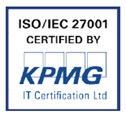Priority Status for Projects Fostering the Green Transition in Finland: Which Projects Benefit and How?
28 February 2023
Author: Meri-Katriina Pyhäranta
Since the beginning of this year, certain types of projects contributing to the green transition have been able to obtain a priority status in the environmental and water permitting, as well as certain court procedures. The new temporary legislation aims to speed up the permitting and court procedures in order to address the climate change by fostering clean and domestic energy production. Speeding up the permitting processes is in fact critical also in terms of reaching the Finnish Government’s ambitious target of becoming the European leader in the hydrogen economy and producing a significant amount of hydrogen already by 2030. Another goal of the legislation is to increase Finland’s energy security, which has become more vulnerable due the energy crisis caused by the Russian attack on Ukraine.
The Benefits of the Priority Status
The priority status grants a project an advantage in two ways. Firstly, environmental and water permit applications that are required for certain types of green transition projects are handled with priority in the Regional State Administrative Agency (the ‘RSAA’) (Fi: aluehallintovirasto). The priority status means that a permit application is handled urgently at all phases of the permitting process. It is worth noting, however, that the advantage is solely procedural; the priority status does not affect the substantive provisions applicable to environmental and/or water permits. The accelerated procedure is applied until 31 December 2026, after which green transition projects will no longer be prioritised over other applications at the RSAA.
Secondly, the new legislation ensures that appeals that may arise in connection with green transition projects that have been granted the priority status are handled urgently in relation to other matters by the appellate courts. Such appeals may concern the following matters: i) environmental and water permits, ii) city plans (Fi: asemakaava) that are considered significant for renewable energy production, and iii) master plans (Fi: yleiskaava) that specifically govern wind power construction. Appellate courts shall apply the priority order until 31 December 2028.
Green Transition Projects Eligible to Obtain the Priority Status
Projects that may be granted the priority status must comply with the ‘Do No Significant Harm’ principle (the ‘DNSH principle’) that has been established by the EU financial regulation (Regulation (EU) 2020/852 on the establishment of a framework to facilitate sustainable investment, Article 17). According to the DNSH principle, the project must not significantly harm any of the following environmental objectives:
- climate change mitigation,
- climate change adaptation,
- sustainable use and protection of water and marine resources,
- circular economy, including waste prevention and recycling,
- pollution prevention and control, or
- protection and restoration of biodiversity and ecosystems.
Despite originating from the EU financial regulation, the DNSH principle is applied independently by the RSAA. Thus, a possible evaluation of the DNSH principle in the context of the financial arrangements of the project does not affect the evaluation of the RSAA, which applies the principle on a more general level and without special inspections otherwise known in the financial regulation.
Projects eligible to obtain the priority status are determined by law and include the following:
- Energy production facilities that produce renewable energy, as well as offshore wind farms and water economy projects that are related to offshore windfarms, such as transmission cables or artificial islands.
- Industrial projects that are based on renewable energy or electrification replacing the use of fossil fuels or raw materials. A project of this category could, for example, replace heat production based on fossil fuels.
- Hydrogen production and use, excluding hydrogen production from fossil fuels. Projects based on low carbon hydrogen production are considered to be included in this category, as it is not required that the production fulfils the EU-level requirements for green hydrogen (more about the requirements for green hydrogen production in our previous blog post). In principle, any kind of use of hydrogen that is produced by electrolysis can be considered to be eligible for the priority status. This category also includes the production of RFNBOs, i.e. renewable fuels of non-biological origin, such as hydrogen based methane and ammonia, as well as the production of green steel.
- Carbon capture, use, and storage. An example of this category would be carbon capture from the emissions of an industrial plant for the purpose of using the carbon in producing hydrogen-based synthetic fuels.
- Battery plants, as well as production, recovery, and reuse of battery materials. The priority status could be granted to projects that aim to foster circular economy, for example by producing batteries from recycled materials. Mining or enrichment of minerals as such are not considered to be part of this category.
The priority status may also be granted to an application that concerns several activities, if the need for the environmental and/or water permit is essentially based on activities listed above.
Procedure to Apply for the Priority Status
In order to obtain the benefits of the priority status, the applicant shall on its own initiative request for the priority status when applying for an environmental and/or water permit. In the same context, the applicant shall also provide the RSAA a comprehensive description of how the project fulfils the requirements that need to be met in order to obtain the priority status. The request is of free format, and it can be placed in connection with new applications, as well as separately to amend already pending applications.
The RSAA handles the requests urgently, but to avoid any delays, it is important that the documentation of the applicant is accurate and provides the necessary information. It is therefore highly recommendable that the applicant studies carefully the practical instructions (in Finnish) provided by the Ministry of the Environment, which also include specific questions which the applicant must answer in order to demonstrate that the project does not significantly harm any of the environmental objectives included in the DNSH principle. Preparing the documentation with accurate level of detail is important also because the decision regarding the priority status cannot be appealed. If the priority status was not granted, the application would be handled as any other application by the RSAA. In respect of applications that are granted the priority status, the objective of the RSAA is to handle the applications within 12 months starting from the date on which the request to obtain the priority status was submitted to it.
Once the project has obtained the priority status from the RSAA, urgency is applied also to any possible appeals concerning the environmental and/or water permit, or the certain types of planning decisions related to the project. Appellate courts will in such a case automatically prioritise said cases without separate application from the project developer or permit holder.
Final Remarks to Consider when Applying for the Priority Status
It is worth noting that the fast-track procedure is only applied by the RSAA and the appellate courts, and not by the Centres for Economic Development, Transport and the Environment (the ‘ELY Centres’) or other permitting authorities (such as municipal authorities and the Finnish Safety and Chemicals Agency, as relevant). Unfortunately, this may significantly affect the relevance of the fast-track procedure if the permitting procedures by other competent authorities will fall behind.
While the new legislation does not include provisions directly affecting the procedures of other permitting authorities, the ELY Centres are nevertheless provided with more resources to prioritise projects that have been granted the priority status. This is better than nothing, as the ELY Centres’ role in permitting procedures is often essential: they act as contact authorities in impact assessments carried out in accordance with the Act on Environmental Impact Assessment Procedures and issue opinions in environmental impact assessments of plans and programmes. They also provide statements for RSAAs regarding environmental and water permits and supervise adherence to the environmental and water permits granted by the RSAAs. Thus, it is of great importance that also the ELY Centres are informed of the priority status of a project, thus making them able to take it into account in their own administrative procedure.
The fast-track legislation is a welcomed initiative to speed up projects that enable the transition to emission-free energy production and a more sustainable economy overall. However, it is, to a large extent, up to the project developers to make sure that projects eligible for the priority status are in fact prioritised in the relevant permitting processes. Preparing the permit application documents carefully and providing clear answers to the questions regarding the DNSH principle will have an important role in this respect. It is often also a good idea to communicate the matter clearly with the relevant authorities (both the RSAAs and the ELY Centres, as well as the appellate courts, if relevant) already before submitting the application and ask for specific instructions, if needed.
Hannes Snellman advises clients on a regular basis with respect to inter alia the permitting, construction, operation and financing of industrial projects. Our experts at Hannes Snellman are closely following the development of the renewable energy sector and the related legislative regime. Please don’t hesitate to contact us should you wish to discuss any related questions.





